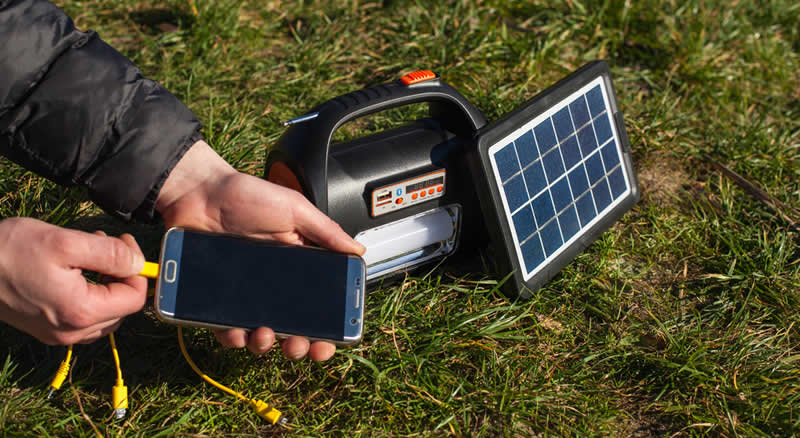5 Tips For Choosing The Right Portable Power Station For Travelling
Most people look forward to travelling. Whether for leisure or business, it’s essential to pack your must-haves. And given that everyone has their gadgets, bringing a portable power supply has become a must-have.

Thanks to innovations in battery technology, a portable power station can power most of your devices that require more energy than a standard power bank can’t provide. A portable power station works like a standby generator but is small and fumeless. It’s fitted with an inverter that converts standard alternating current from the battery to direct current.
You can plug in your appliances safely as it doesn’t generate emissions. The good thing with a portable power station is that you can be something other than technology savvy as it’s easy to operate. Plug in your gadgets hit the power button, and leave them to charge.
Today the market is crowded with diverse brands of portable power stations. The challenging part is that each type offers a unique feature that makes it more convenient for specific situations. Choosing which portable power station to buy can take time, but it’s worth the patience. After all, the top solar generators and portable power stations should afford you the independence to travel the world without restrictions.
If you’re planning to get a portable power station but don’t know which one suits your needs, this article is your guide. Below are five tips to help you decide: If you’re planning to get a portable power station but don’t know which one suits your needs, this article is your guide. Below are five tips to help you decide:
1. Determine The Number Of Gadgets You Have
Given that you’re getting a portable power station for your travels, it’s essential to take note of the number of gadgets you’ll need to charge. Say you often bring your laptop, camera, and phone when travelling. Then it’s best to go for a portable power station with several charging ports to charge several devices simultaneously. Otherwise, a few charging ports would suffice if you only have a gadget or two.
Basically, your goal is to guarantee you have enough charging ports in case you’ll need to charge your gadgets simultaneously.
2. Consider The Duration Of Your Travel
Another factor to consider when buying a portable power station is the duration of your travel. Say you’re planning a short trip to a different city for a few days, and you’ll be moving most of the time. In this case, buying a small, compact power station would be more convenient. Meanwhile, if your trip takes longer, consider investing in a larger, heavy-duty portable power station.
3. Choose A Durable Portable Power Station
Investing in a portable power station that can withstand adverse weather conditions and other elements is ideal. So, if your trip involves a lot of outdoor activities, such as camping and tailgate parties in different locations, it’s best to consider the power station’s durability. It’s risky to venture out without enough juice when your activities depend on reliable access to power.
4. Assess The Battery Capacity
The power station’s battery capacity is a crucial factor to consider when buying a portable power station. The power stored in the battery is calculated in watt-hours (Wh). This typically depends on the type of gadget, its specs, and the duration of your travel. To give you a brief insight:
- Phones: 5–20 watts
- Laptops: 20–50 watts
- Cameras: approximately around 340 watts
If you’re wondering how long it takes for a battery to reload, here’s a quick guide:
- A lithium-ion (Li-ion) battery has a lifetime of about 800 cycles based on usage. Thus, if you use your portable power station every day for two years without encountering any challenges, it should last approximately three times longer than expected before replacing it. This won't occur until approximately five years later.
- Nickel metal hydride (NiMH) batteries have a high capacity. But their rates for every cycle are much lower than Li-ion batteries. Due to their weight and size, they need to be more suitable and dependable when you're travelling. They lose charge fast and demand maintenance expenses from time to time. This makes them undesirable compared to Li-ion batteries.
Identifying how many watts per hour is needed to charge a single device, along with other factors, such as the duration, will help you choose the right portable power station.

5. Look At The Different Charging Options
Many portable power stations are meant to be charged through a wall socket. This is a perfect solution to ensure you have a loaded battery when there's no power or during a blackout. However, having another option to recharge the battery during a power cut is vital. Consider a portable power station that has an alternative recharging option. Solar is one of the best.
Another convenient option would be to have adapters that allow the power station to be recharged from a car. This gives you an extra alternative during rainy days. Being able to combine two or more recharging approaches is an excellent feature.
Final Thoughts
Take the stress out of travelling by packing your essentials, especially your gadgets. There are several options for portable power stations in the market, and each has varying attributes to attract you to purchase their product. But before you buy that portable power station, consider the tips above to guarantee it meets your needs. Ultimately, you’d want a durable and dependable portable power station that will power your gadgets whenever required.
|
|